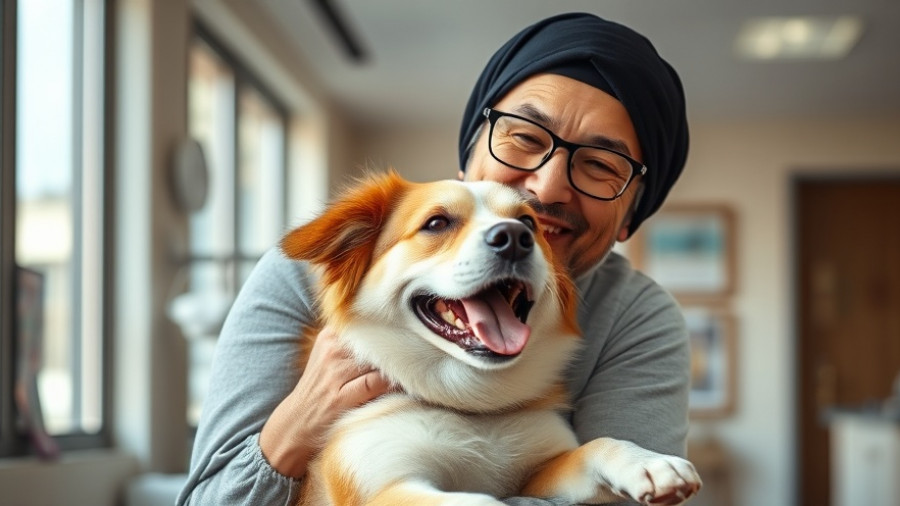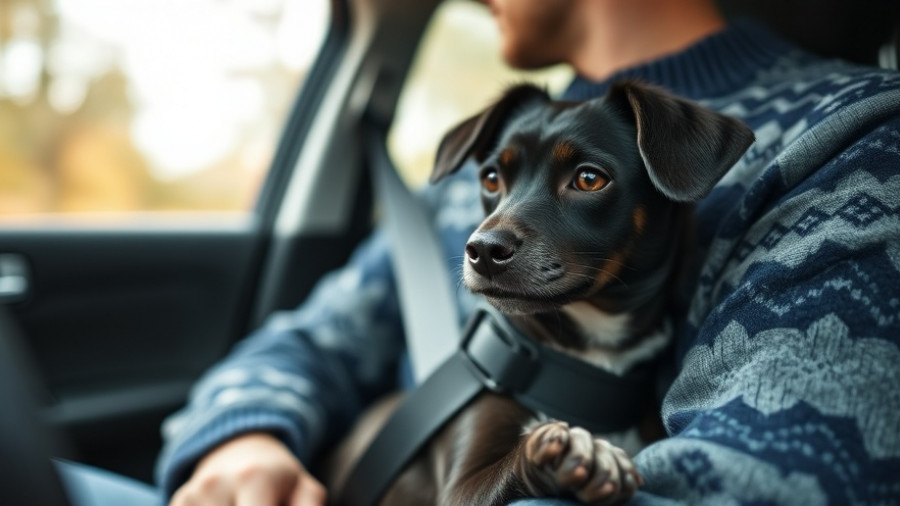
Why Water Safety Matters for Your Dog
As summer approaches and the urge to splash in lakes, rivers, and pools increases, ensuring the safety of our furry friends becomes paramount. Water activities can turn dangerous for dogs in a matter of seconds, leading to unfortunate incidents like drowning and water intoxication. Reports suggest that over 5,000 dogs lose their lives annually to drowning, particularly in backyard pools, highlighting the need for vigilant water safety practices.
Understanding Water Hazards for Dogs
Every dog owner should be aware of the common water hazards that threaten our pets. Drowning in pools is a significant concern since dogs cannot navigate ladders and may panic when they can’t find an exit. Breeds like Bulldogs and Pugs, with their unique physical structures, are particularly vulnerable. Additionally, rip currents in oceans can swiftly pull even strong swimmers away, creating perilous situations in mere moments.
Equally alarming is the risk of water intoxication, often overlooked by pet owners. This condition arises when dogs consume excessive amounts of fresh water while playing, leading to dangerously diluted blood sodium levels. Symptoms can include pale gums, confusion, and lethargy, making prevention essential. It’s also vital to bring fresh water during outings, reducing the chance of your dog drinking harmful lake or pool water.
The Importance of Weather Awareness
Environmental conditions can shift rapidly near water, and understanding these changes can save lives. Cold water temperatures can induce hypothermia, while sudden storms can create hazardous waves. Moreover, algal blooms can produce toxins that pose serious health risks to our pets. Always check local water conditions and weather forecasts before heading out.
Training Your Dog for Safe Water Activities
To keep your dog safe around water, proper training is foundational. Start by introducing them to shallow waters where they can touch the bottom, perhaps using a kiddie pool for nervous pups. Remember, forcing them into the water can create anxiety, leading to future reluctance. Encourage wary dogs with high-value treats, and never stray too far during these initial sessions.
Choosing the Right Equipment
Every dog, regardless of swimming ability, requires a life jacket for safety. These jackets should fit snugly and feature sturdy handles for quick retrieval if your dog tires or panics. Even strong swimmers like Retrievers benefit from this precaution.
Before heading out, consider your dog's breed-specific attributes. Brachycephalic breeds may struggle in water due to their anatomy, while breeds like Poodles thrive with their natural swimming abilities. Understanding these breed differences is crucial for developing a positive water experience.
Keeping Your Dog Healthy Around Water
Standing water can pose significant health risks, harboring bacteria like E. coli and Giardia. Keeping your dog well-hydrated with fresh water during outings can mitigate their urge to drink from potentially contaminated sources. With proper planning, you can enable your dog to enjoy water activities while significantly lowering health risks.
Insurance for Fun: The Psychological Benefits of Participation
Engaging in water activities can significantly enhance the bond between you and your dog. These experiences not only provide exercise but also enrich your dog’s mental health through social interaction and stimulation. Establishing comfort around water can open up fun opportunities for future adventures, such as swimming lessons or trips to dog-friendly beaches.
Being informed about the perils and best practices can turn swimming from a risky endeavor into an exciting experience for both you and your dog. Remember, proactive measures are key to ensuring that summer fun doesn’t lead to tragedy.
By prioritizing water safety, dog owners can ensure that playtime remains a source of joy and bonding rather than a cause for concern. So prepare, equip yourself with knowledge, and dive into water activities with your beloved pet safely!
 Add Row
Add Row  Add
Add 




Write A Comment